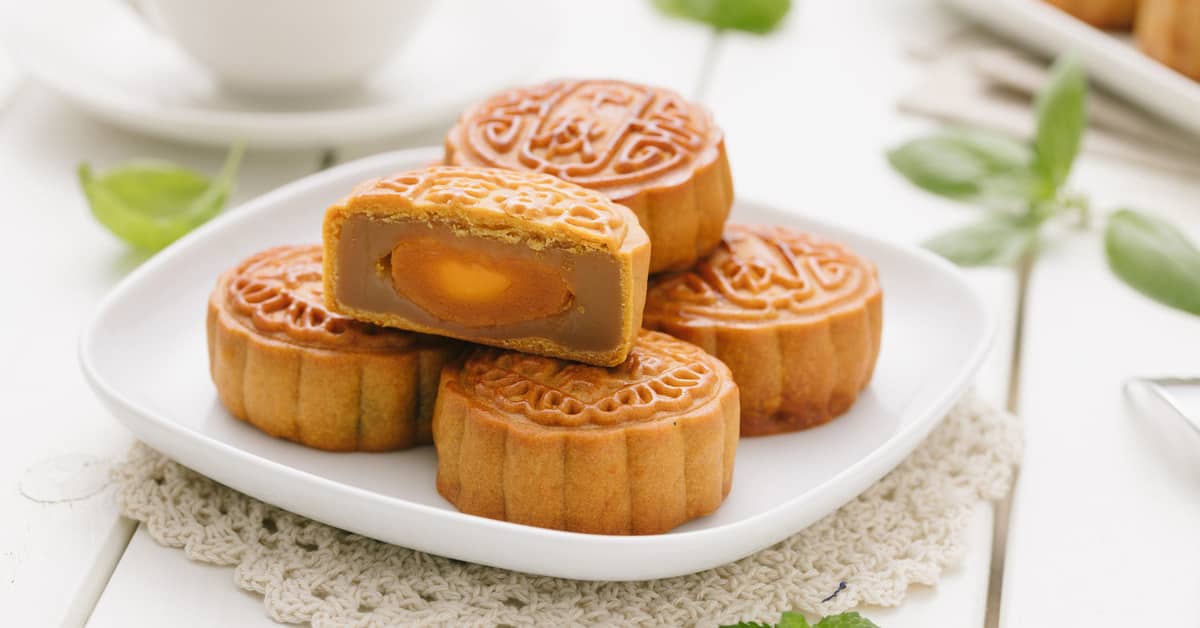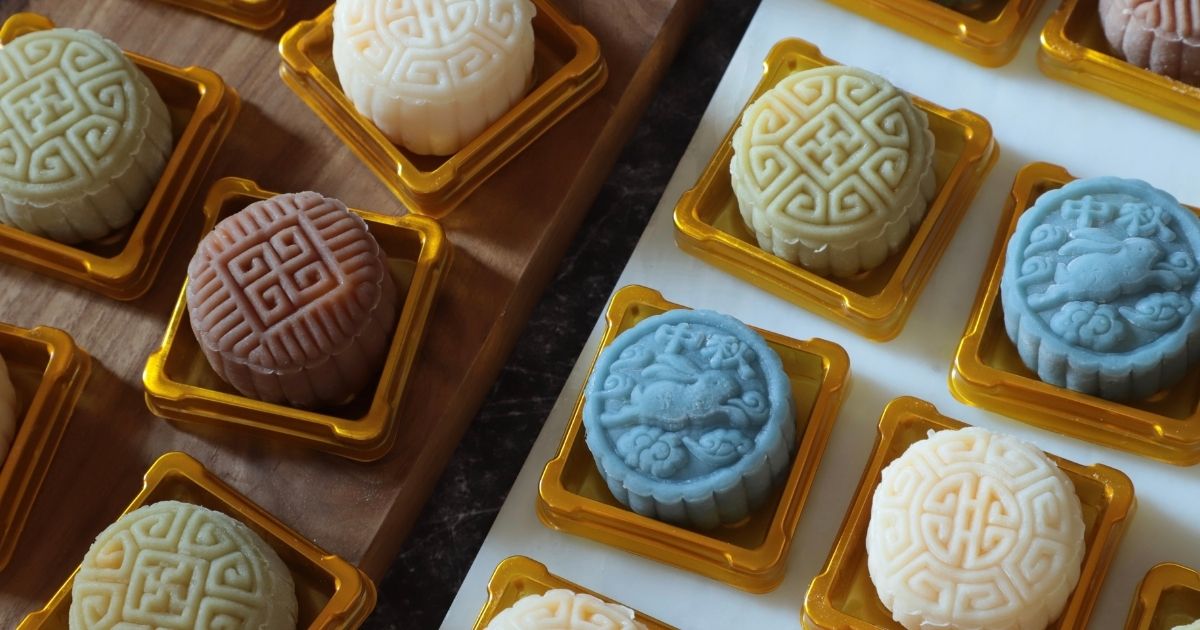Last Updated on 2024-08-29 , 7:55 pm
As the season of mooncakes approaches, so does the anxiety about the extra calories they bring.
With its sweetness, you should know that these delectable treats are notorious for being high in calories, sugar, and fat.
And while we all know it’s tough to resist the temptation, it’s also important to know what you’re getting into before indulging in a slice (or two or three) of that delicious mooncake.
Mooncake Calories: The Ultimate Guide to How Many Calories Are in Each Type of Mooncake
Mooncakes come in various forms and flavors, from the traditional lotus seed paste to the more modern snow skin varieties.
Each type has its own unique nutritional profile, and it’s important to be aware of this before diving into the delicious world of mooncakes.
Traditional Mooncake Calories

The traditional mooncakes usually contain lotus seed paste and salted egg yolks, which are high in calories and sugar. A typical piece of lotus seed paste mooncake with one yolk can contain about 716 calories, depending a lot on its size and its filling.
Snow Skin Mooncake Calories

On the other hand, snow skin mooncakes, a more modern and ‘lighter’ alternative, contains fewer calories, with an average of 350 calories per piece. But be warned: while snow skin mooncakes may be lighter in calories, they can still be high in sugar.
Teochew-Style Mooncake Calories
Another popular variety of mooncake is the Teochew-style mooncake. This type is filled with a mixture of melon seeds, white sesame seeds, and dried winter melon, and is typically lower in calories compared to the traditional lotus seed paste mooncakes. A piece of Teochew-style mooncake can contain around 400-500 calories.
Ice-Cream Mooncake Calories
In recent years, ice cream mooncake has become a delightful fusion of traditional Chinese mooncake and modern ice cream dessert, creating a unique treat perfect for the Mid-Autumn Festival or any other special occasion. In ice cream mooncake, the conventional fillings are replaced by ice cream, and the outer layer is made of a thin, slightly chewy mochi skin or sometimes even a layer of chocolate or biscuit.
This modern twist on a classic not only satisfies cravings for a cold dessert but also honors the cultural significance of the mooncake, symbolizing family reunion and harmony. The popularity of ice cream mooncake has grown rapidly over the years, with many ice cream and bakery shops offering a variety of flavors and designs to choose from.
The calorie count of an ice cream mooncake varies depending on its size, ingredients, and flavor. A typical ice cream mooncake weighing about 100 grams can have roughly 200 to 300 calories. The mochi or chocolate outer layer and the ice cream filling are the main contributors to the calorie count.
Richer ice cream flavors like chocolate or caramel will have higher calorie content compared to lighter flavors like fruit sorbet or vanilla. Additionally, any added toppings or fillings, such as nuts or chocolate chips, will also increase the calorie count. It is always recommended to check the nutrition label or inquire with the manufacturer for the most accurate calorie information.
Healthier-Option Mooncake
And for those who prefer a healthier option, there are also mooncakes made with low-sugar and healthier ingredients like nuts and seeds. These healthier alternatives may contain around 250-350 calories per piece, making them a better option for those who are trying to watch their weight.
But of course, the best solution is to eat in moderation.
Watch Out for the Sneaky Sugars
Now, don’t take what you’ve just read at face value.
We all know that Singaporeans love their food sweet, and mooncakes are no exception. However, the sweetness can sometimes be deceiving.
Even if a mooncake is labeled as “low-sugar,” it may still contain a high amount of calories and fat. This is because sugar contributes to the overall taste and texture of the mooncake, and reducing the sugar content can lead to a drier, less flavorful mooncake. Therefore, manufacturers may add more fat to compensate for the reduced sugar, leading to a higher calorie content.
Another factor to consider is the type of sugar used in the mooncake. Traditional mooncakes often use maltose syrup, which is less sweet compared to sucrose but contains almost the same amount of calories.
So, even if a mooncake tastes less sweet, it doesn’t necessarily mean it’s lower in calories.
In addition, there are also mooncakes that contain hidden sugars in the form of fruits, nuts, or other ingredients. For example, a mooncake with a filling of mixed nuts may seem like a healthier option, but the nuts are often coated with sugar or honey before being added to the mooncake, increasing the overall sugar and calorie content.
A Balanced Approach
So, what’s the solution?
Don’t count the calories.
The key is to enjoy mooncakes in moderation. Try to limit yourself to one piece (or a slice, of course, if you can) of mooncake per day, and balance your diet with other nutrient-rich foods like fruits, vegetables, and lean proteins.
Also, consider sharing a mooncake with your family or friends instead of eating the entire thing by yourself. This way, you can still enjoy the delicious taste of mooncakes without going overboard on the calories.
Or you can consider using this trick:
Would you be jailed for being half-naked in public? Well, the answer will shock you. Seriously. Watch this to the end and you'll understand:






